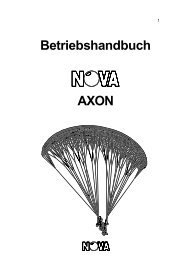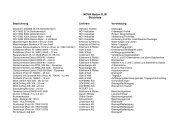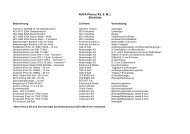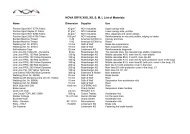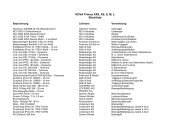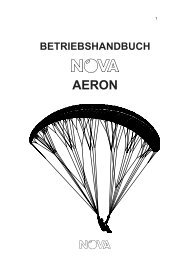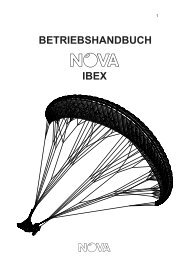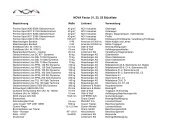Version 1.0 01/06/2011 - Nova Paragliding
Version 1.0 01/06/2011 - Nova Paragliding
Version 1.0 01/06/2011 - Nova Paragliding
Create successful ePaper yourself
Turn your PDF publications into a flip-book with our unique Google optimized e-Paper software.
The FACTOR 2 has a very well balanced and easy take off behaviour.<br />
Corrections are easy to perform at any time and no special advice is needed for<br />
forward or reverse launches.<br />
A proper take off technique can only be learnt by intensive training. That’s why<br />
we recommend to spend some time on a training hill every once in a while.<br />
Also some ground handling will improve your take off skills. The best thing is<br />
to have an experienced pilot with you who can help with some advice.<br />
Like this, you will soon be able to launch your glider confidently, even in<br />
difficult conditions. This will add a lot of safety to your flying and it allows you<br />
to enjoy your flights from the very beginning.<br />
Normal flight<br />
If you release both brakes (“Hands up”) the FACTOR 2 glides at the so called<br />
“trim speed”. At this speed, the glide ratio reaches its maximum.<br />
If you fly into a headwind or through sinking air, you should use the accelerator<br />
to maximise your glide ratio. If you use the accelerator in turbulent conditions,<br />
you have to consider more demanding reactions in the case of a collapse. So<br />
you should keep more distance from the ground if you fly accelerated.<br />
If you fly in strong turbulences we recommend applying both brakes slightly.<br />
This increases the stability and you get good feedback through the brakes,<br />
which is necessary to fly your wing actively.<br />
Flying actively means permanent control and correction of the angle of attack<br />
in turbulent air. If you fly from lift into an area of sinking air, the angle of<br />
attack will decrease and the wing will pitch down. A good pilot will realise this<br />
even before the wing pitches down, by a reduced brake pressure. The right<br />
reaction would be to apply the brakes more and thereby increase brake pressure<br />
to prevent the wing from pitching down or even from collapsing in turbulent<br />
conditions.<br />
Flying from sinking air into lift is just the opposite: Without any pilot action,<br />
the angle of attack would increase and the wing would pitch up. The pilot can<br />
feel this, by an increased brake pressure. In this situation, the pilot should<br />
release the brakes to reduce the pitch movement.<br />
To generalize:<br />
Vers.<strong>1.0</strong><br />
0<strong>1.0</strong>6.2<strong>01</strong>1 S. 13 / 39



